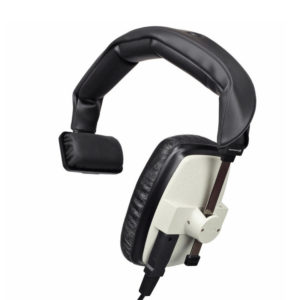- in Book Excerpt , Production by Bobby Owsinski
6 Tips To A Better Click Track
 Many musicians, producers and engineers fight with the click track for various reasons, but most of the time it’s because the player just can’t hear it in a way that’s conducive to playing in the pocket.
Many musicians, producers and engineers fight with the click track for various reasons, but most of the time it’s because the player just can’t hear it in a way that’s conducive to playing in the pocket.
Here are 6 tips from the 2nd edition of my Music Producer’s Handbook (previously posted on my Big Picture blog) about not only getting the click to cut through the mix and making it groove, but preventing any bleed into open microphones as well.
“Many times just providing a metronome in the phones isn’t enough. What good is a click if you can’t hear it, or worse yet, groove to it? Here are some tricks to make the click not only listenable, but cut through the densest mixes and seem like another instrument in the track too.
1. Pick The Right Sound. Something that’s more musical than an electronic click is better to groove to. Try either a cowbell, sidestick, or even a conga slap. Needless to say, when you pick a sound to replace the click, it should fit with the context of the song. Many drummers like two sounds for the click; something like a high go-go bell for the downbeat and a low go-go bell for the other beats or vice-versa.
2. Pick The Right Number Of Clicks Per Bar. Some players like 1/4 notes while others play a lot better with 8ths. Whichever it is, it will work better if there’s more emphasis on the downbeat (beat 1) than on the other beats.
3. Make It Groove. By adding a little delay to the click you can make it swing a bit and it won’t sound so stiff. This makes it easier for players that normally have trouble playing to a click. As a side benefit, this can help make any bleed that does occur less offensive as it will seem like part of the song.
Preventing Click Bleed
OK, now the click cuts through the mix but it does it so well that it’s bleeding into the mics. You’ll find this mostly with drummers (who usually want to hear it at near ear-splitting levels) and string players (who play very quietly and therefore need the gain of the mics turned up). Try the following:
4. Try a different set of headphones. Try a pair that has a better seal. The Sony 7506 phones provide a fairly good seal, but the Metrophones “Studio Kans,” the Vic Firth S1H1’s, or even the Race Day Electronics “Racing Headphones” (they’re mono though), will all isolate a click from bleeding into nearby mics.
5. Run the click through an equalizer and roll off the high end just enough to cut down on the bleed.
6. Have the players use one-eared headphones. Many times players will leave the phones loose so they can hear what’s going on with the other players in the room. If they can have click in one ear (in the headphone) that’s sealed closely to the head, then they get the live room sound in their free ear. One-eared phones have become almost standard for ensemble recording for horn and string sections, and are sometimes preferred by vocal groups as well. A good example is the Beyer DT102 (shown on the left).”
Sometimes all it takes is one of these tricks to put a smile on the face of everybody both in and out of the control room, so give them a try.
You can read more from The Music Producer’s Handbook and my other books on the excerpt section of bobbyowsinski.com.

